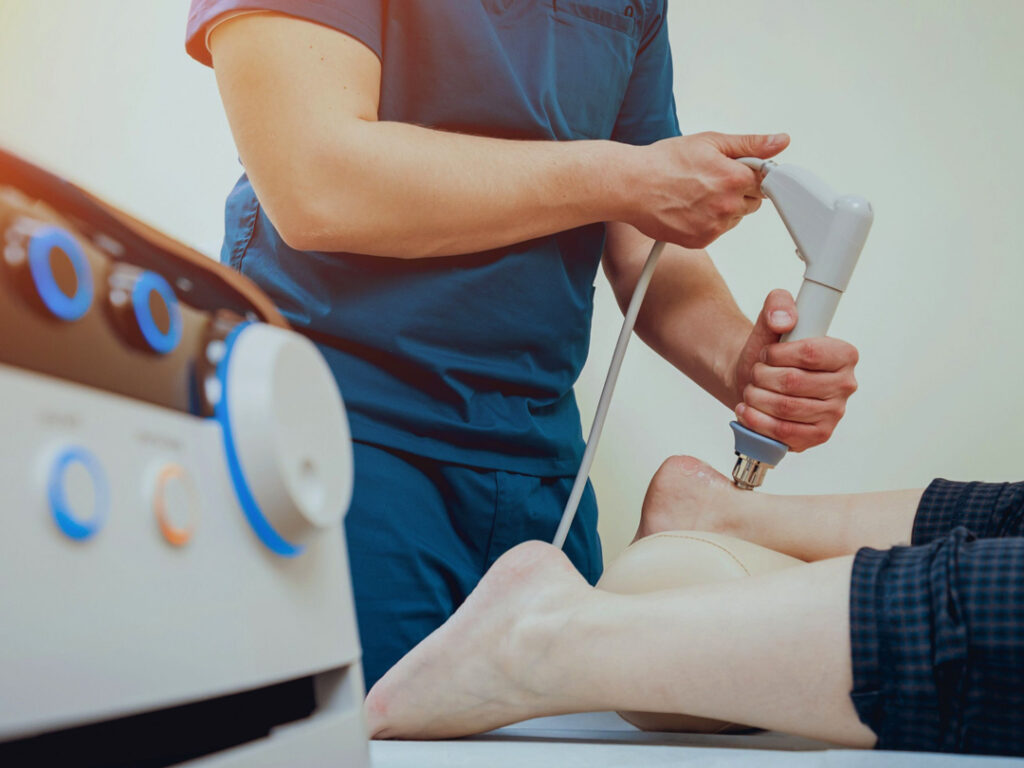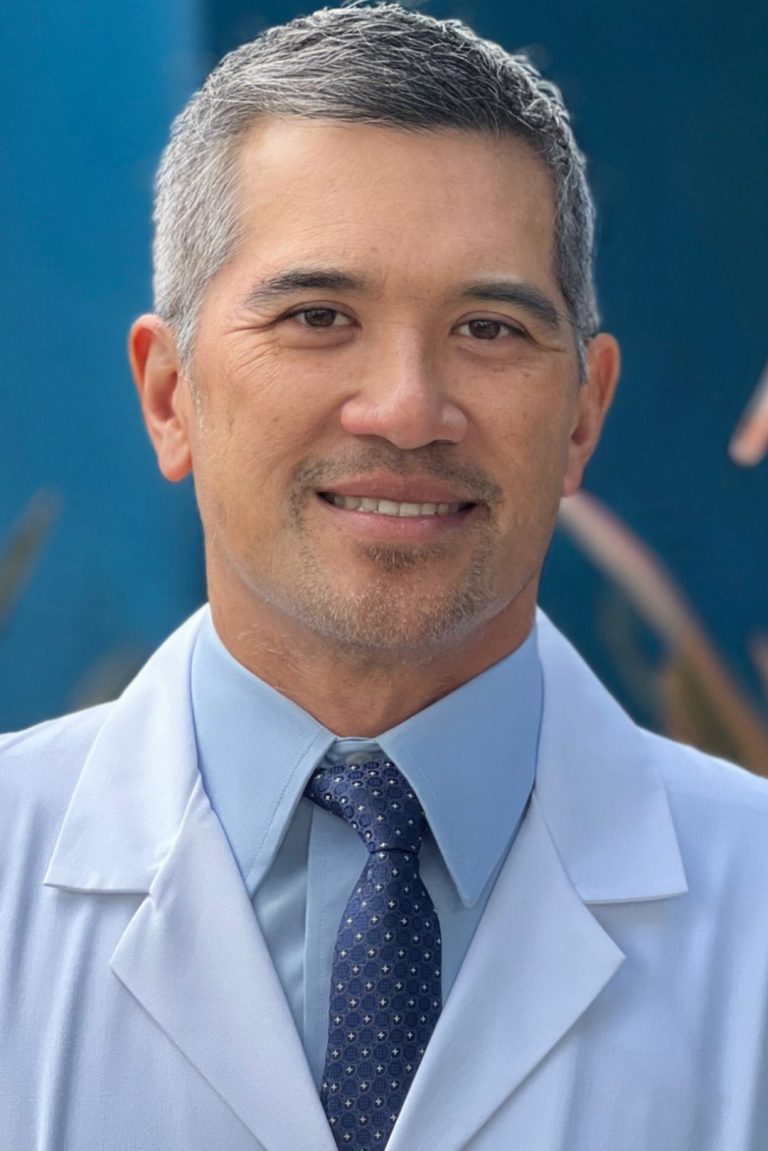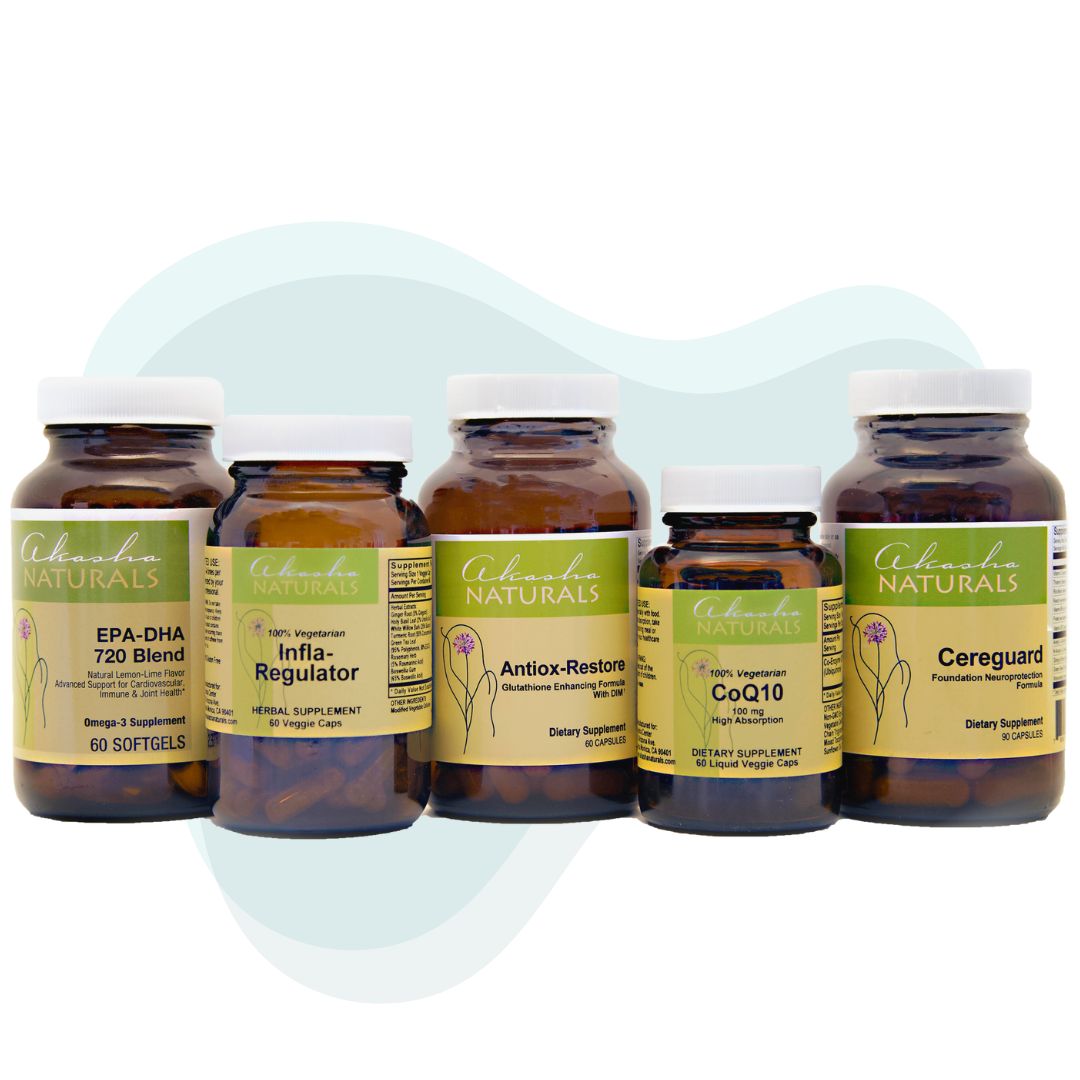Acoustic Wave Therapy
What is it? Acoustic Wave Therapy or AWT is used to treat various musculoskeletal conditions, primarily chronic, affecting medium to large-sized tendons and their insertions on bones, such as Plantar fasciitis, achilles tendinopathy, bursitis – and others.
Also referred to as Extracorporeal Acoustic Wave Therapy, it delivers an acoustic wave of energy that travels through tissues releasing a rapid rise and fall of pressure at tissue interfaces, lasting approximately 5–10 minutes. During each treatment, approximately 2500–3000 wave of energy are administered to the injured tissue, with the practitioner adjusting the intensity of the wave to ensure the injured tissue receives the required energy needed for healing.

Acoustic Wave Therapy & Inflammation
Acoustic Wave Therapy can help reduce inflammation, swelling, and pain by decreasing the release of inflammatory mediators from cells in the injured muscle or tendon. The sound waves cause tiny vibrations in the tissue, which help to break up calcification/nodules released by the inflammatory cells and promote healing.
Erectile Dysfunction
Is it Effective?
Acoustic Wave Therapy has been around for many years as a non-invasive treatment for kidney stones and orthopedic injuries. Recently, urologists have begun using this alternative therapy to treat ED successfully.
Low-intensity acoustic wave therapy is also emerging as a non-invasive alternative or supplemental option to a medication called PDE5 inhibitors for men with vasculogenic erectile dysfunction, which means decreased blood flow to the penis.
Typically recommended for patients who do not respond well to medication or do not want more invasive treatments, Acoustic Wave Therapy for ED is still considered an experimental treatment option with robust evidence-based research, to date, supporting its efficacy. While it isn’t currently an FDA-approved treatment for ED, primary-care doctors and urologists use it and report excellent results.
Shockwave Therapy
& Sports Injury
Because AWT uses acoustic waves to break up soft tissue calcifications, it also enhances collagen synthesis, releases growth factors, and stimulates the healing process to improve pain. Given this, plus the fact that Acoustic Wave Therapy enhances blood circulation and accelerates the healing of stubborn musculoskeletal conditions in bones, tendons, ligaments, and muscles, more and more sports medicine doctors are recommending it.
Patients can avoid invasive treatments such as steroid injections or surgery, depending on the injury. Acoustic Wave therapy requires no incisions or downtime, and most patients see long-term results after only three treatments, which take about 10 minutes each.
How often? Generally, 3-5 treatment sessions are necessary, with a treatment done every 5–10 days. The standard protocol indicates three treatments be completed for optimal long-term results, even if you are experiencing no pain after the first visit.
Our Practitioners Who Specialize in Acoustic Wave Therapy

Gina Galvez, M.S., PA-C
Integrative Physician’s Assistant & Regenerative Clinic Coordinator

Leland Dao, DO
Osteopathic Physician
Sports Medicine & Primary Care

Yi Qiao, L.Ac., OMD
Acupuncture & Chinese Medicine
Does Insurance Cover it?
While the FDA has approved Acoustic Wave Therapy for several conditions, some insurances have yet to incorporate this treatment into their plans. Check with your insurance provider to determine whether shockwave therapy is covered.
Summary (partial) from PubMed:
Acoustic Wave Therapy is safe, and there are only a few known side effects (such as minimal pain and hematomas). Still, no severe complications are expected if it is performed as recommended.
The exact mechanism of it is a component of various studies, but as far as we can summarize today, it is a similar process to a cascade triggered by mechanical energy, which causes cellular changes in the skeleton, promoting the cell core’s reaction and improving the healing process.
The musculoskeletal pain indications for Acoustic Wave Therapy are pseudoarthrosis – delayed fracture healing – bone marrow edema, osteonecrosis – and insertional tendinopathies, such as plantar fasciitis, achilles tendon fasciitis, calcifying tendonitis of the rotator cuff, tennis elbow, and wound healing problems.
References:
https://www.ncbi.nlm.nih.gov/pmc/articles/PMC7608508/










